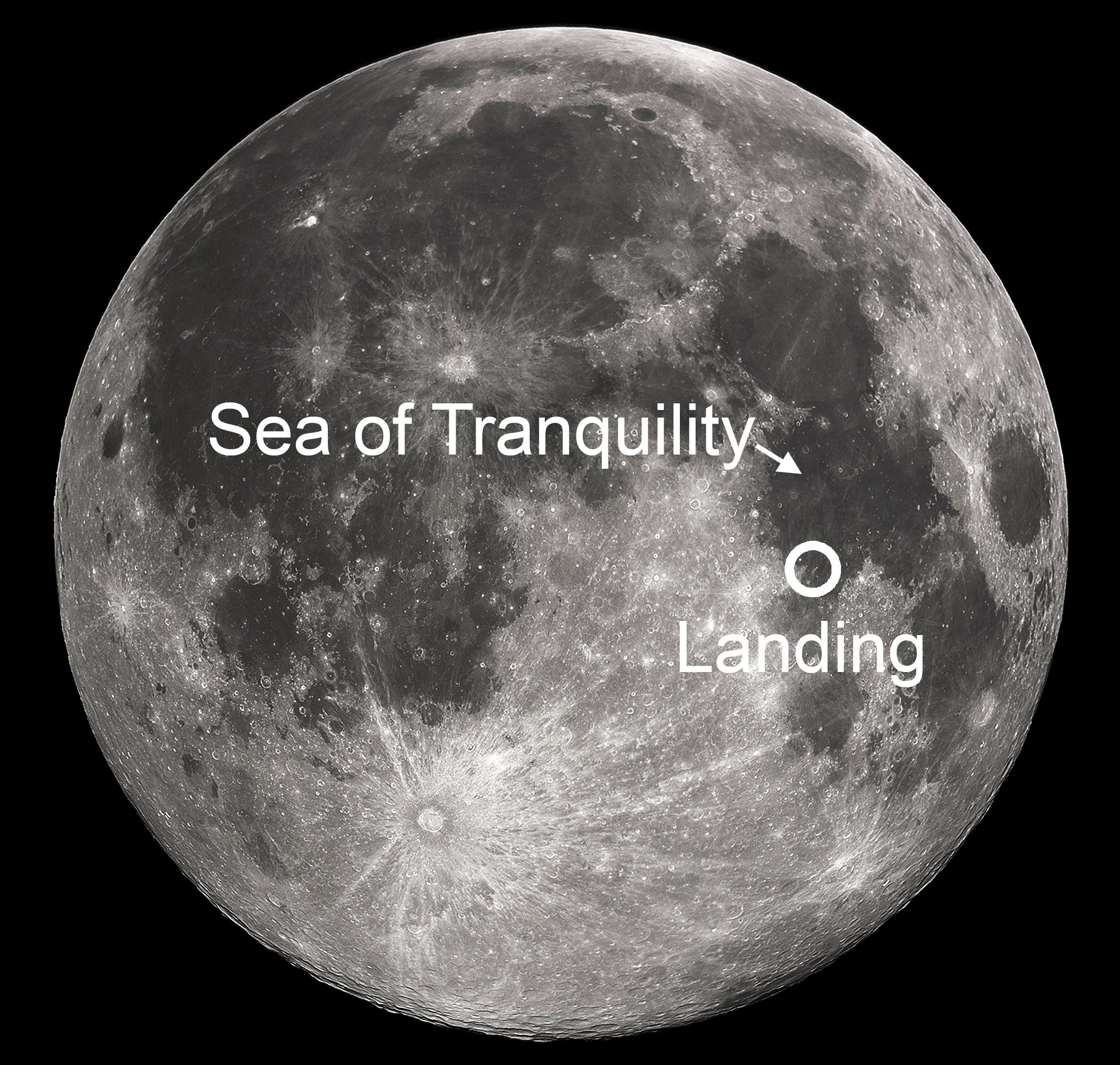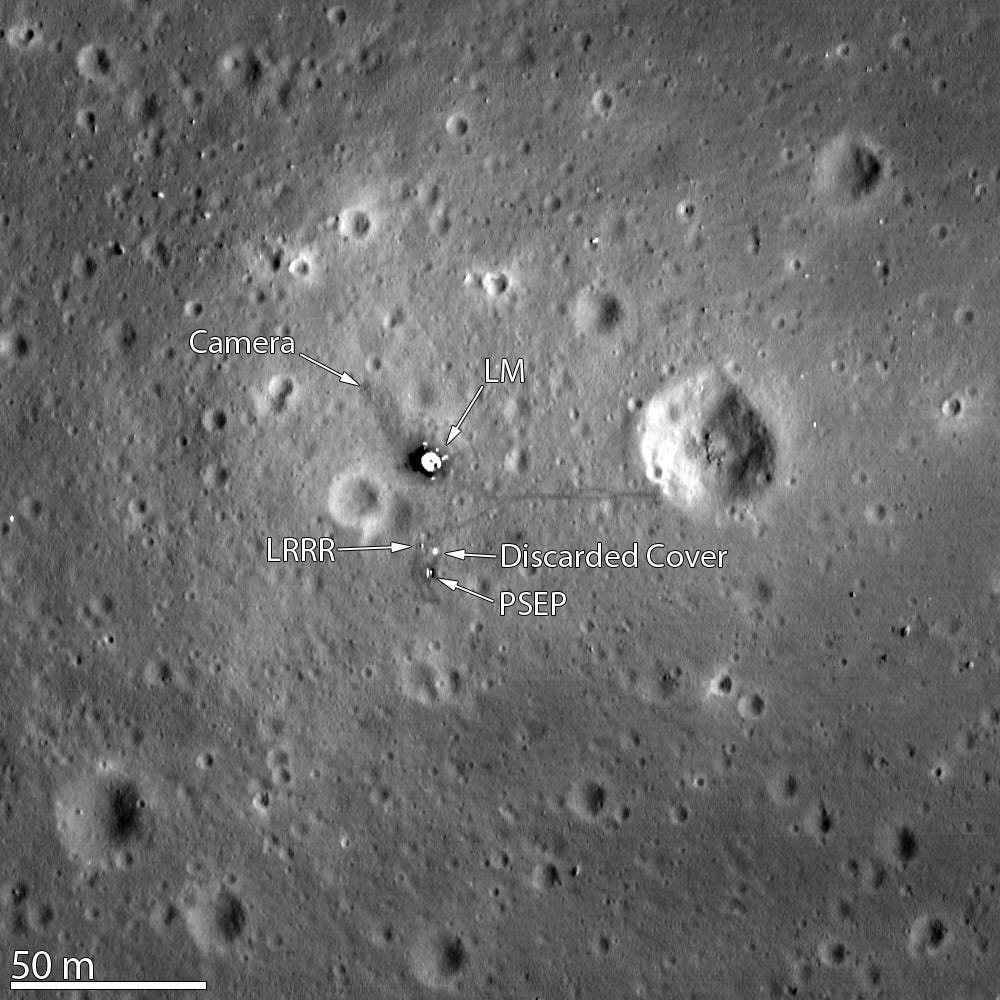The landing site of NASA Apollo 11
NASA chose the Apollo 11 landing site for engineering simplicity, but it had scientific benefits nevertheless.
On July 20, 1969, NASA put two astronauts on the Moon. They chose to land the Apollo 11 spacecraft in a plain, not-so-rocky region called the Sea of Tranquility for primarily engineering simplicity. Nevertheless, the landing site was scientifically interesting.

When you look up to the Moon, you see several dark regions. These are vast, solidified lava plains sitting on top of huge, deep, ancient craters. The craters formed 4.1 to 3.8 billion years ago during a time when large asteroids and comets were bombarding all planets and moons of the solar system. Later on, the Moon’s volcanoes filled those craters with lava which cooled over time to make the regions appear as it does today.
Apollo 11’s landing region, the Sea of Tranquility, is one such giant basin formed during the bombardment period, then lava-filled by volcanoes, burying any of the basin’s rocks and mountains. Once the lava solidified, it formed smooth desert-like plains, which are much easier for spacecraft to land on than rocky areas. Though the Apollo landing still had to deal with plenty of impact craters as seen in the image captured by NASA’s Lunar Reconnaissance Orbiter (LRO). The Moon really is cratered all the way down.

The Sea of Tranquility is interesting in two more ways. Much like the other dark regions on the Moon, it is metal-rich, as evident with enhanced image processing techniques. And curiously enough, it lacks a gravitational high at its center, meaning its not as dense as some other basins on the Moon.
Apollo 11 collected 20 kilograms of rock and soil samples at the landing region and brought them to Earth for detailed studies in laboratories worldwide for decades. Scientists found the soil to be basaltic, which is interesting because that’s the most common rock type on Earth. Apollo 11 samples also contained tiny fragments of rocks thrown off by impacts on the bright, rocky areas nearby. Its composition was found to be in line with the leading theory of how the Moon formed.
Interestingly, rocks collected from smaller craters contained tiny patches of glass. NASA has made the complete science output from the Apollo 11 mission available in their science report. You can explore the Apollo 11 landing region in NASA’s interactive Moon map, just like Google Maps, by clicking the image below.

The Apollo missions forever changed our understanding of the Moon’s origin. Here’s hoping that the renewed global frenzy of going to the Moon sticks around this time, as there are plenty of reasons to explore the Moon.
Like what you read? Support me to keep me going.
